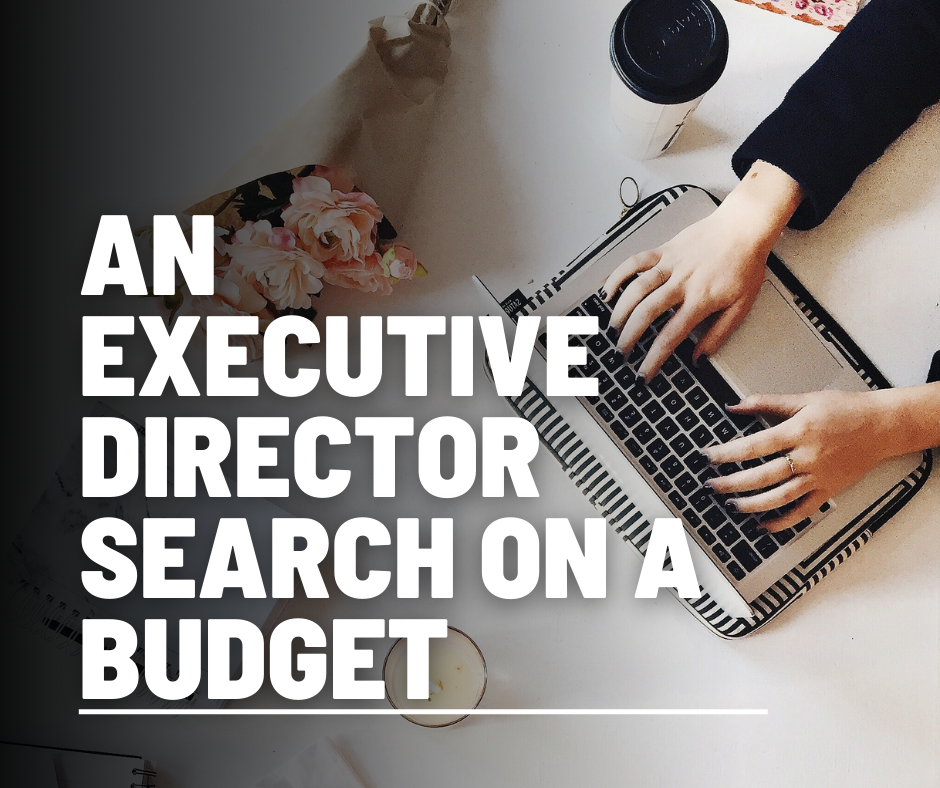Engaging a professional executive search consultant can offer substantial cost benefits. This was borne out in a recent collaboration with a nonprofit board that had initially attempted to find a new executive director on their own. After months of stress, no candidates were found who were right for the position, prompting the board to enlist my expertise. I helped them find multiple highly-qualified candidates and they hired their top choice.
 Ingrid Kirst
Ingrid Kirst
Case Study: Effective Communication in a Crisis
I was recently involved in a situation where a nonprofit had to deal with a quickly escalating negative PR issue. I learned a lot about how to manage the issue quickly and effectively.
The situation: a video was posted online that showed a board member conducting herself in a manner both contrary to organization policy and generally accepted behavior. The board member continued to add fuel to the fire in the video’s comments in an attempt to defend herself, and also publicly identified herself as a board member of the organization. The video rapidly went viral with people sharing and commenting on it from around the world. The organization’s leaders were receiving many messages demanding they do something about this board member.
Eight Great Alternatives to Starting a Nonprofit
Starting a nonprofit organization sounds like fun, but the reality is that it takes quite a bit of work. There are valid reasons to start a new organization, but your very first step should be extensive research to make sure the need isn’t being filled already by someone with more experience. All too often, I hear about someone starting an organization to help a village in Africa or to raise money to fight a disease. That time and money could be better spent by joining efforts with an existing group.
Building an Effective Board of Leaders: A Step-by-Step Guide
Great leadership is essential for every board, but it takes time to develop a strong, effective board. While you can’t instantly create an exceptional board, there is good news – you can cultivate a board that will significantly benefit your organization. In this article, I will guide you through the essential steps to building a high-impact board.
An Executive Director Search on a Budget

Many small nonprofits aren’t ready to hire a search firm to find their next executive director. Organizations can do the search themselves but should involve people in the process who have experience in searches and follow best practices. Below is an overview of the process that will result in the best possible hire on a budget. Keep in mind that this method will take a significant amount of the board’s time to carry out.
Why Your Organization Needs an Interim Executive Director
Why Your Organization Needs an Interim Executive Director
In any nonprofit organization, the executive director plays a key role. The director is the conduit between the board and staff, the public face of the organization, the person who guides the direction of the organization, and much more. When a long-time director leaves, or when the organization has had multiple directors during a short period of time, the board should consider bringing in an interim executive director to strengthen the organization and facilitate the transition. An interim executive director gives the board time for a comprehensive search for the next executive director, since they don’t have to worry about hurrying to get leadership in place.
Crafting an Operating Manual for Your Organization
As your organization grows, you will develop the best ways to carry out every aspect of your work. Sometimes these are nonprofit best practices. Other times they are simply the methods your bookkeeper or funder wants you to use. The more of these procedures you develop, the more important it is to document them.
In addition, as your nonprofit grows, more staff will be taking care of different duties, and no single staff person will know how to do everything. It’s important for everyone to document their work.
This documentation has a wide range of uses. First, when you take a vacation, it makes it much easier for others to cover for you. Imagine how much easier it would be to prepare to leave for a two-week trip if you have all your day-to-day tasks already documented. Second, when you leave your position, it will be much easier to hand things off and know that the organization will be in good hands moving forward. Third, documenting this information will allow you to see where you can delegate tasks. If you can train someone on a task now, why not have them take it on permanently? Finally, having this documentation will help you be more efficient. In creating the manual, you’ll be able to think through your regular tasks and find ways to do your job more efficiently and effectively. You’ll also have all the information you need documented in one place. For example, you’ll have instructions on how to fill out that complicated form you have to fill out only once a year.
Hiring the First Executive Director for Your Organization
You’ve started your nonprofit organization and it has grown with the help of an amazing team of volunteers. But now it is getting too successful. You and your fellow volunteers have full-time jobs and can’t devote the time to the nonprofit that it really needs. What’s the next step? Hiring someone is a big decision and has the possibility of growing the organization significantly. But it also comes with a lot of challenges as the current board and volunteers are used to doing things their way and need to be ready to let someone else take over.
Hiring that first staff person can make a tremendous difference for your organization. It levels up your work in a way that is hard to imagine in advance. Having paid staff means you have someone with the time to devote to the work and to building relationships in the community. It also means someone who has professional experience in nonprofits or who has the time to dedicate to learning about how nonprofits best work. And finally, having paid staff often leads to more stability in your organization as compared to an all-volunteer group. Funders and potential partners will take your organization more seriously if you have paid staff – they know you are going to be around and doing the work long-term.
Grants Management Software & Spreadsheet
Below are a few options that were reasonably priced, well-liked, and cloud-based. It was hard to find options as many lists for “grants management software” were for funders. Here are three options that are a step up from the basic spreadsheet that most of us wind up using. The other option is of course to use project management software, especially if you are already using it to manage other projects. Some CRMs also include it as a function. Both of those are beyond the scope of this article.
Nontraditional Ways to Recruit Nonprofit Candidates
Hiring a new staff member? Once you’ve put together a great job posting, it’s time to start finding great candidates. In the past, you could expect people would find you but with the incredible competition out there for great workers, that’s not enough anymore.
Especially for high-level positions, remember that your best candidates have jobs already, and may not be actively looking for a new position. How can you find those folks and encourage them to apply?






